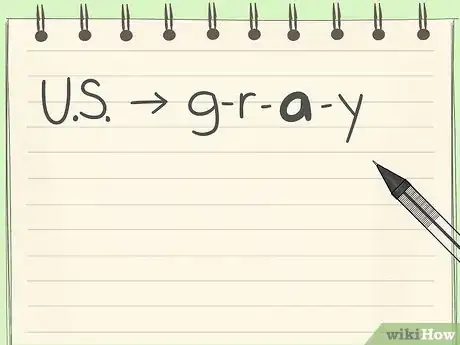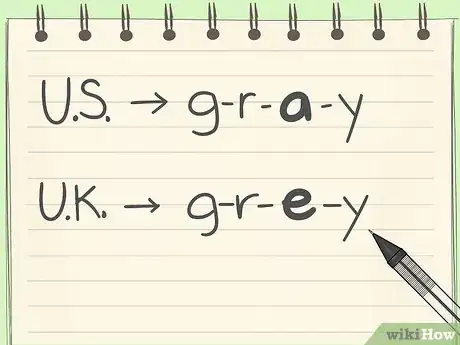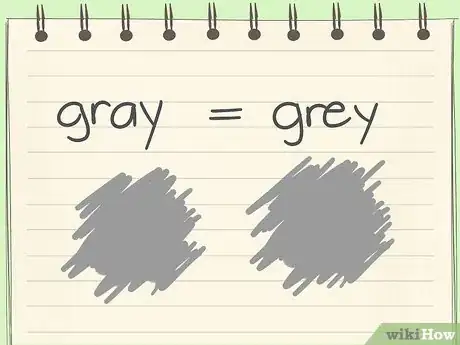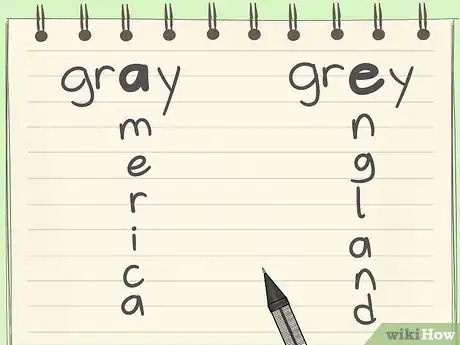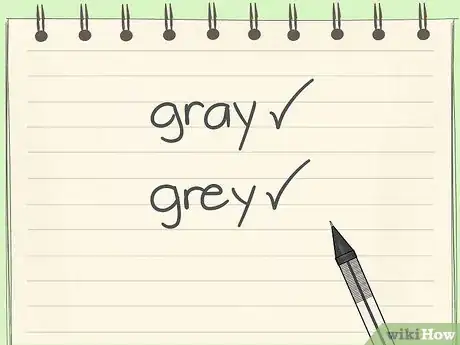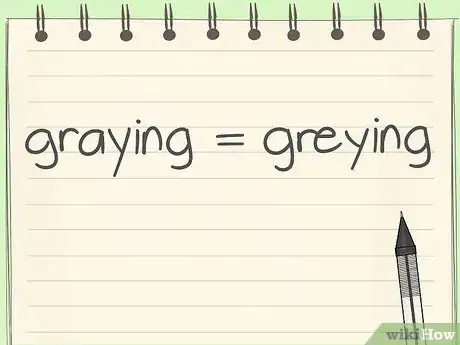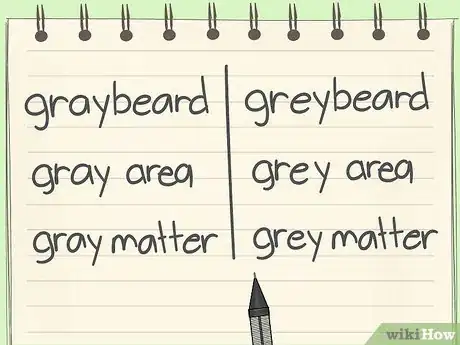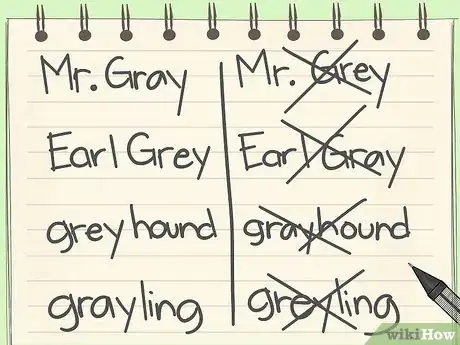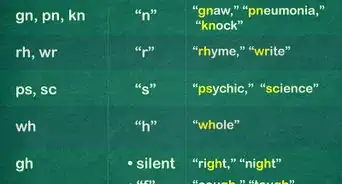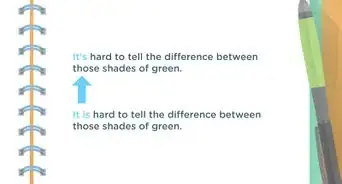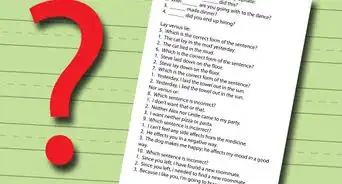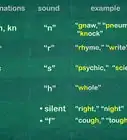wikiHow is a “wiki,” similar to Wikipedia, which means that many of our articles are co-written by multiple authors. To create this article, volunteer authors worked to edit and improve it over time.
This article has been viewed 75,650 times.
Learn more...
If you've ever wondered which spelling—gray or grey—is technically correct, you aren't alone. The answer primarily depends on where you're located.
Steps
Learn the Simple Answer
-
1Use "gray" for American English. If you're in the United States, the most commonly accepted way to spell the term is with an a—"gray."
- In the United States, "gray" appears roughly 20 times for every appearance of "grey."[1]
-
2Use "grey" for British English. If you're in the United Kingdom, Canada, or Australia, the term should be spelled with an e—"grey."
- In the United Kingdom, "grey" can be found roughly 20 times for every use of "gray."
Understand the Historical Background
-
1Learn the Old English term. Both "gray" and "grey" were derived from the original Old English term referring to the same color: grǣg
- Both spellings date back hundreds of years, so there's really no way to distinguish which is right and which is wrong.
- It's worth noting that "grey" was more popular during the early 1700s in all English dialects, but by 1825, American English had primarily switched to "gray." As time passed, both versions became widely known, but the preference between British and American English still remains.[2]
-
2Understand that color differences are subjective. Periodically, individuals, organizations, and others will refer to "gray" and "grey" as two slightly different colors, but such variations are purely a matter of preference rather than fact.
- Both spellings primarily refer to the exact same neutral hue that exists between black and white on the color spectrum. Similarly, both spellings can also be used to refer to something that is dull or gloomy.
- While there is no actual difference in color, there have been claims of such differences throughout the centuries. For example, the English chemist George Field attempted to differentiate the two in 1835 by claiming that "gray" referred to a cool or blue-tone shade, while "grey" referred to a strictly neutral one. His definition did not catch on in popular opinion, however, and is no longer observed.[3]
-
3Remember the difference using a mnemonic device. If you can't remember when to use "gray" versus "grey," consider the following trick:
- Match the a in "gray" to the a at the start of "America," and the e and "grey" to the e at the start of "England." That should help you remember that "gray" is common in American English while "grey" is used in British English.
- Keep in mind, however, that England is not the only country that uses "grey." Any country that uses British English will spell the word with an e, including all members of the United Kingdom. English dialects closer to British English (e.g. Canadian English and Australian English) also use the "grey" spelling.
-
4Don't worry too much. Even though the most widely used spelling varies by location, you don't have to worry if you accidentally forget or mix things up. Both spellings have historical basis, and both are generally accepted regardless of where you are.
Apply the Principle to Other Forms
-
1Interchange "gray" and "grey" in verb form. When using the term as a verb, you can spell it either way for all forms of the verb.
- In other words, both "graying" and "greying" are correct, just as "grays" and "greys" or "grayed" and "greyed" would be.
- As with the original term, the preference between a and e changes depending on the version of English used. Stick with a forms in American English and e forms in British English.
-
2Swap between spellings for most words and phrases. Like the verb forms, most words or phrases that use the term as their root can also be spelled either way.
- This applies to many single words, such as "graybeard" (which can also be spelled "greybeard"), but it is especially true of multi-word phrases, like "gray area" ("grey area") or "gray matter" ("grey matter").
- In these instances, you should still stick with the "grey" spelling when using British English and the "gray" spelling when using American English.
-
3Know which forms are set to one spelling. In rare cases, certain terms or phrases that use the original term must stick to either the a or e spelling.
- This is especially true of last names. If someone's surname is "Gray," you shouldn't change it to "Grey," and vice versa.
- The tea Earl Grey should always be spelled with an e since its name comes from Charles Grey, the British prime minister between 1830 and 1834.[4]
- While not a proper noun, "greyhound" should always be spelled with an e. Conversely, "grayling" should always be spelled with an a.
References
About This Article
If you're in the United States, spell the color gray with an “A." However, if you’re in the United Kingdom, Canada, or another country that speaks British English, you should spell it with an “E,” since that's more commonly accepted in those countries. To learn how to spell the color gray wherever you are by remembering an easy mnemonic, read on!
